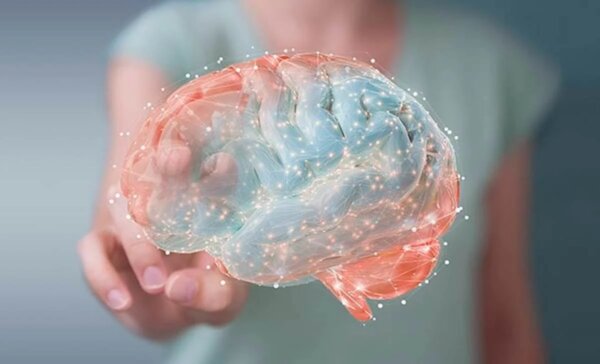Your Brain and Your Motivation to Survive


Written and verified by the psychologist Valeria Sabater
During World War II, the Japanese coined the term bura-bura. They used this word to describe the mental state of those prisoners who’d lost all hope, completely given up, and eventually died. This poses the question, where does your brain get the motivation and desire to live from? Furthermore, why is it that some people simply lose their spirit and will to live?
This topic has interested experts and laymen alike for decades. Nick Moloney, one of the world’s greatest sailors, talks about watershed moments. Those times when it’s far easier to give up and die than to carry on living. In fact, he’s actually found himself in those extreme kinds of situations, where he’s been in so much pain that the lack of adrenaline stopped him from sailing.
Once, he was wounded, cast adrift, and completely lost the will to live. This is the worst kind of psychological scenario anyone could ever find themselves in, when they’ve lost all hope and just don’t want to carry on. In order to overcome this feeling, they have to make one final effort, one that goes way beyond the physical. One, in fact, that places huge demands on their emotional reserves.
What happens in these moments? How do people manage to switch on their motivation when they’re absolutely at the end of their rope?

Where does the brain get the motivation to carry on?
One of the greatest experts in psychological endurance and survival was Dr. Al Siebert of the University of Michigan. Among his best-known books was The Survivor Personality: Why Some People Are Stronger, Smarter, and More Skillful at Handling Life’s Difficulties. In this book, he explained many cases of survival and loss.
One of his most striking accounts was that of an 18 person Canadian military aircraft that crashed very close to a Canadian Arctic base. Out of the 18 onboard, 13 managed to walk for four days to the military base. Of the rest, three died at the scene. Two more, who were uninjured, stayed behind but subsequently died of frostbite.
Dr. Siebert explained that, in this particular region, despite the harsh climate, the indigenous community managed to live quite happily, raising their families. The two men who died were military, well trained, and had the remains of the plane to shelter in. However, as the survivors recounted, they chose to stay behind because they’d simply given up.
Al Siebert calls this phenomenon psychogenic death. It means that individuals simply give up and allow themselves to die. Apparently, this is more common than you might think. Furthermore, it raises an obvious question. Where does the brain get the motivation to carry on?
It isn’t just down to dopamine
Neuroscience suggests that dopamine is released into the nucleus accumbens, which is called the pleasure center of the brain. In fact, dopamine is the neurotransmitter that drives the behaviors that produce a sense of well-being. For example, eating, socializing, having fun, having sex, etc. Survival is also driven by this element.
However, studies conducted by the neuroscience department at the University of Cologne (Germany) claim that animals (mice) with depleted dopamine levels still exhibit motivational behaviors that guarantee their survival.
More importantly, we know that people with Parkinson’s disease (which is due to a lack of dopamine in the brain) don’t lose interest in eating, socializing, and other behaviors that guarantee their survival. This suggests that there’s more to the survival instinct than simply the neurochemical aspect.

Healthy habits, goals, and a rich and active social life are important for the brain
Where does the brain get the motivation and will to live? Until not long ago we thought it all solely depended on the neurological world of dopamine, serotonin, and endorphins. However, it’s now known that the brain doesn’t just secrete these chemicals regardless. They appear in your bloodstream because something favors their release.
Surviving requires effort and motives
Returning to the case of the military survivors in the Canadian Arctic, those 13 people had hope. Indeed, they knew that going to look for help was better than giving up. As a matter of fact, the simple act of having a purpose actually favors the release of neurotransmitters. Just like the wounded sailor, when he felt he didn’t have much motivation or strength to carry on. He did it because he remembered his family, the people who loved him.
Because, when you remember your reasons for living, it ignites a spark of motivation to stay alive and fight for survival. This is also relevant when it comes to your habits and customary behaviors. For example, nobody wants to get up at 6 a.m. to go for a run. However, pushing yourself to maintain your routines leads you to continue with these healthy habits.
Finally, if you wonder where your brain gets its motivation from, remember one thing. As we’ve pointed out, motivation requires “reasons” for it to be activated. These reasons might be an active life, social contact, successful relationships, etc. Indeed, your desire to live doesn’t come ready-made. You need to discover it on a daily basis. You do this by setting goals for yourself, enjoying your surroundings, and nurturing your desires.
During World War II, the Japanese coined the term bura-bura. They used this word to describe the mental state of those prisoners who’d lost all hope, completely given up, and eventually died. This poses the question, where does your brain get the motivation and desire to live from? Furthermore, why is it that some people simply lose their spirit and will to live?
This topic has interested experts and laymen alike for decades. Nick Moloney, one of the world’s greatest sailors, talks about watershed moments. Those times when it’s far easier to give up and die than to carry on living. In fact, he’s actually found himself in those extreme kinds of situations, where he’s been in so much pain that the lack of adrenaline stopped him from sailing.
Once, he was wounded, cast adrift, and completely lost the will to live. This is the worst kind of psychological scenario anyone could ever find themselves in, when they’ve lost all hope and just don’t want to carry on. In order to overcome this feeling, they have to make one final effort, one that goes way beyond the physical. One, in fact, that places huge demands on their emotional reserves.
What happens in these moments? How do people manage to switch on their motivation when they’re absolutely at the end of their rope?

Where does the brain get the motivation to carry on?
One of the greatest experts in psychological endurance and survival was Dr. Al Siebert of the University of Michigan. Among his best-known books was The Survivor Personality: Why Some People Are Stronger, Smarter, and More Skillful at Handling Life’s Difficulties. In this book, he explained many cases of survival and loss.
One of his most striking accounts was that of an 18 person Canadian military aircraft that crashed very close to a Canadian Arctic base. Out of the 18 onboard, 13 managed to walk for four days to the military base. Of the rest, three died at the scene. Two more, who were uninjured, stayed behind but subsequently died of frostbite.
Dr. Siebert explained that, in this particular region, despite the harsh climate, the indigenous community managed to live quite happily, raising their families. The two men who died were military, well trained, and had the remains of the plane to shelter in. However, as the survivors recounted, they chose to stay behind because they’d simply given up.
Al Siebert calls this phenomenon psychogenic death. It means that individuals simply give up and allow themselves to die. Apparently, this is more common than you might think. Furthermore, it raises an obvious question. Where does the brain get the motivation to carry on?
It isn’t just down to dopamine
Neuroscience suggests that dopamine is released into the nucleus accumbens, which is called the pleasure center of the brain. In fact, dopamine is the neurotransmitter that drives the behaviors that produce a sense of well-being. For example, eating, socializing, having fun, having sex, etc. Survival is also driven by this element.
However, studies conducted by the neuroscience department at the University of Cologne (Germany) claim that animals (mice) with depleted dopamine levels still exhibit motivational behaviors that guarantee their survival.
More importantly, we know that people with Parkinson’s disease (which is due to a lack of dopamine in the brain) don’t lose interest in eating, socializing, and other behaviors that guarantee their survival. This suggests that there’s more to the survival instinct than simply the neurochemical aspect.

Healthy habits, goals, and a rich and active social life are important for the brain
Where does the brain get the motivation and will to live? Until not long ago we thought it all solely depended on the neurological world of dopamine, serotonin, and endorphins. However, it’s now known that the brain doesn’t just secrete these chemicals regardless. They appear in your bloodstream because something favors their release.
Surviving requires effort and motives
Returning to the case of the military survivors in the Canadian Arctic, those 13 people had hope. Indeed, they knew that going to look for help was better than giving up. As a matter of fact, the simple act of having a purpose actually favors the release of neurotransmitters. Just like the wounded sailor, when he felt he didn’t have much motivation or strength to carry on. He did it because he remembered his family, the people who loved him.
Because, when you remember your reasons for living, it ignites a spark of motivation to stay alive and fight for survival. This is also relevant when it comes to your habits and customary behaviors. For example, nobody wants to get up at 6 a.m. to go for a run. However, pushing yourself to maintain your routines leads you to continue with these healthy habits.
Finally, if you wonder where your brain gets its motivation from, remember one thing. As we’ve pointed out, motivation requires “reasons” for it to be activated. These reasons might be an active life, social contact, successful relationships, etc. Indeed, your desire to live doesn’t come ready-made. You need to discover it on a daily basis. You do this by setting goals for yourself, enjoying your surroundings, and nurturing your desires.
All cited sources were thoroughly reviewed by our team to ensure their quality, reliability, currency, and validity. The bibliography of this article was considered reliable and of academic or scientific accuracy.
- Michely, J., Viswanathan, S., Hauser, T.U. et al. The role of dopamine in dynamic effort-reward integration. Neuropsychopharmacol. 45, 1448–1453 (2020). https://doi.org/10.1038/s41386-020-0669-0
- Richards, R. & McEwan, M. (1989). The survival factor. Tunbridge Wells: DJ Costello.
- Sarter, M., Givens, B. & Bruno, J.P. (2001). The cognitive neuroscience of sustained attention: Where top-down meets bottom-up. Brain Research Reviews, 35, 146–160.
- Scott, C. (2004, 14 November). The best of times, worst of times: Nick Moloney. Sunday Times Magazine, p.17.
- Siebert, A. (2001). The survivor personality. New York: Putnam.
- Simpson, J. (1988). Touching the void. London: Jonathon Cape.
- Kim S. I. (2013). Neuroscientific model of motivational process. Frontiers in psychology, 4, 98. https://doi.org/10.3389/fpsyg.2013.00098
This text is provided for informational purposes only and does not replace consultation with a professional. If in doubt, consult your specialist.







